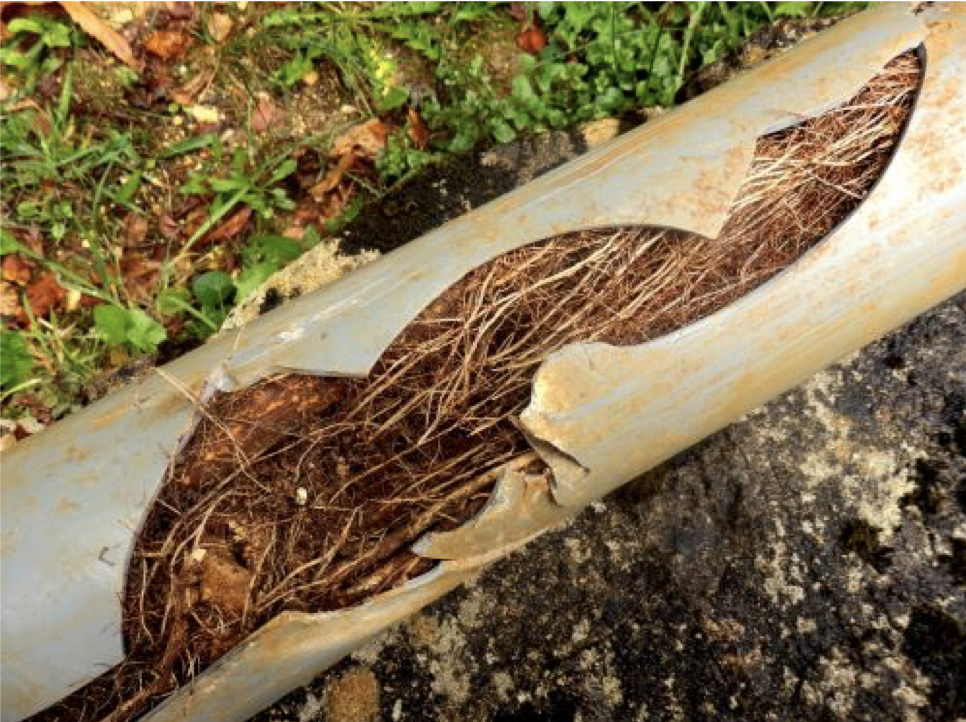
Trees are very important to our daily existence. In addition to providing us with the oxygen we need to breathe and stay alive, trees can provide necessary components to lawns, provide shade, block wind, and serve as a home for a wide variety of birds and other creatures. Thus, a steady supply of healthy growing trees is essential, but these healthy growing trees are accompanied by healthy growing roots, which can sometimes cause serious issues.
Over time, robust roots can threaten or encroach upon underground utilities, foundations, the roots of other trees and vegetation, and even the health and safety of humans and other creatures. Often, you can keep roots from doing any kind of serious damage by properly trimming them. This entails careful cutting to shorten roots in a way that doesn’t hurt the overall health of the tree. And once you’re done, you must then take cautious measures to prevent the roots from growing back in an unseemly way and extending back into unwanted areas.
Protect the Tree
As it pertains to root removal, you must be very careful, though. Generally, while you want to stop the roots from causing damage, you don’t want to harm or outright kill the tree itself. It’s a delicate process. Even though it’s important to take care of your driveway, yard, or sewer, to keep your tree healthy, it’s essential you also take great care with the trimming.
So how do you go about doing this? And what are the different scenarios that could require it? If this is something you find yourself needing to do, you can attempt to do it yourself or call a professional like Mr. Tree, but either way, it’ll require the use of a shovel or pick to be able to dig around the roots. You’ll need to pull out as much of the root you’re removing as possible, but do everything you can not to damage any of the roots still connected to the tree.
Unclog Pipes and Drain Lines
Tree roots are well-known for clogging up sewer pipes and drain lines, causing issues for a multitude of fixtures in your home. The best way to kill roots in this situation, without killing the tree, is to replace the pipes, but since that’s a costly process, it may not be an option. In lieu of replacing the pipes, your second-best option is to kill the roots in the pipe or drain by using a root killer such as RootX, which will wipe out the roots you don’t want without killing the tree itself.
However, even after you do this, there will still be openings in the pipe or drain for new unwanted roots to grow. So you’ll have to continue keeping an eye on all the relevant pipes or drains and continue this process whenever necessary. Keep in mind that it’s highly probable you’ll eventually have to do this again in the future, perhaps even multiple times.
Dig Out Tripping Hazards
It’s one thing to have to deal with roots in pipes or drains, but it’s also irritating when those roots become a nuisance in your yard. If roots are sticking out in your lawn, they could damage your lawnmower or, even worse, contribute to somebody tripping and hurting themselves. The roots have a reason for sticking out like this, namely the fact that they’re trying to absorb as much water as possible, and sticking out makes it easier to take in the water from your sprinklers. That said, when this happens, it’s an issue you need to deal with, and you need a permanent solution.
One way to go about this is to dig around the roots with a shovel and cut them from the tree. Then pull as much of the roots out as you can without damaging the other roots or the rest of the tree. However, another way that’s often more efficient and effective involves planting a raised flower bed around the tree and using that to keep people away from the tripping hazard.
Rescue and Protect Pavement
Eliminating roots without killing trees in drains, pipes, and yards is difficult enough, but what about going through this process when it involves sidewalks or driveways? This process can become very complicated because it almost always involves the root lifting and cracking the cement. You can eliminate this problem by digging a trench next to the spot on the driveway or sidewalk where you’re looking to remove the roots. Once you have done that—and word of warning, it may take a while—you can remove the damaging roots, which should prevent further damage to the driveway or sidewalk until new roots grow in their place.
You may be wondering what the point of going through this time-consuming process is if the roots are just going to grow back in the same place and cause the same problems all over again. This is a perfectly valid concern, and the issue should be dealt with proactively. The easiest way to keep the tree root from growing back in the same place that caused problems initially is to purchase cement board and put it next to the concrete where the root was. This will encourage the root to go under the cement board.
An even better long-term solution would be to cut out the concrete and repour new cement, but that requires a lot of time, labor, and money, so it’s likely not a realistic option for most people. However, if you do decide to proceed in this manner, you’ll want to make sure you hire professional concrete lifters to carry out the task, since it’s a difficult procedure and very easy to make matters worse if you don’t know what you’re doing.
 PeKu Publications
PeKu Publications